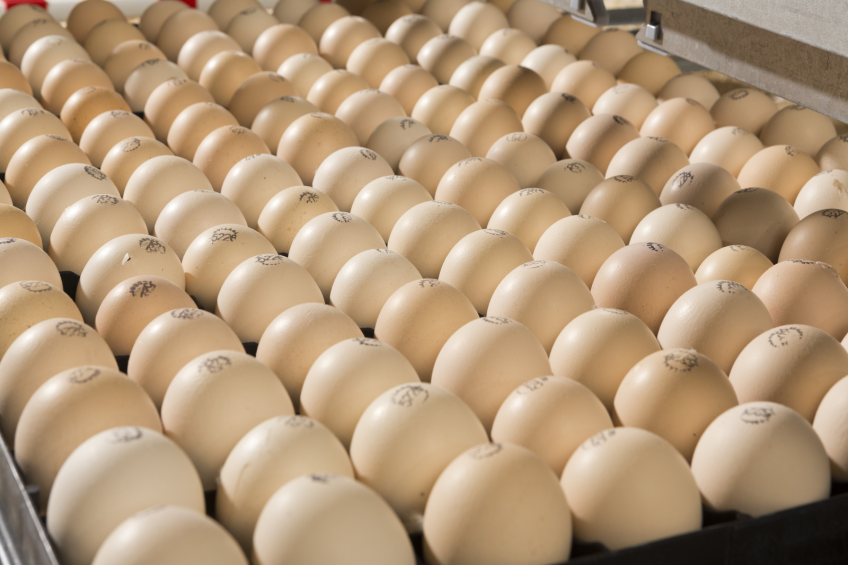Bird flu prompts first shipment of EU eggs to US in decades

Egg markets face disruption across Europe as the US seeks to replace supplies lost from outbreaks of bird flu, traders have warned.
It has lost about 35 million laying hens – 10% of its national flock – to avian influenza since January, creating an acute supply shortage. As a result, it has granted access to the Netherlands for egg product sooner than expected. It is understood that Germany may also be sending egg to the US. On 1 June, the United States Department of Agriculture granted approval for five Dutch companies to export their egg for the first time since 1987.
Disrupt domestic and intra-European trade
Hubert Andela, president of ANEVEI, the Dutch Association of Egg Traders, said the country had been trying to sell to the US for some time. “Prices for egg white powder in the US have been around double that of the EU for two years; that is why we began the process to gain market access.” That sudden granting of access was welcome, he added, but it would disrupt domestic and intra-European trade. He urged caution to producers thinking of expanding, suggesting it was difficult to tell when normal production would resume in the US, and that other countries could win access.
Facing a true crisis
Cory Martin, of the American Bakers’ Association, which campaigned for access to the Netherlands, said it was a “big step” but more needed to be done to alleviate supply issues. He called on the US government to seek out more markets for egg product. “We are facing a true crisis, and without additional actions to increase supply, bakers and many other food manufacturers face dire situations in the coming weeks and months,” added Mr Martin.
Dutch egg producers normally export two-thirds of their output, with the main market being Germany. One estimate suggested about 1% of its output – equivalent to 100m eggs – could be shipped to the US. The US is not the only country looking to Europe for egg products, with Spain and Portugal enjoying buoyant trade to third countries as a result of their AI-free status.
UK is pretty short of colony
Andy Crossland, of the British Central Egg Agency, said domestic colony prices had improved in the past few weeks, largely because of demand outside Britain. “The UK is pretty short of colony at the moment,” he said. “A few birds went early around Easter because prices were falling, and retailer demand was not strong.” Prices had since rallied, he added, with some noting “enquiries” on the Continent for UK eggs.
US egg prices to hit record high due to bird flu
Meanwhile, The average price of a dozen eggs in the United States will climb to a record high this year due to the nation’s worst-ever outbreak of bird flu in poultry, US Department of Agriculture data issued last Wednesday showed. The USDA, in a monthly supply and demand report, increased its forecast for the price of Grade A large eggs in New York in 2015 to $1.60 to $1.66 per dozen. That is up from its May estimate of $1.30 to $1.36, and tops last year’s average price of about $1.42, which was a record high, according to USDA data.
In the fourth quarter of 2015, eggs will average $1.73 to $1.87 per dozen, up from about $1.63 a year earlier, the USDA said. Last month, the agency predicted a dozen eggs would cost $1.33 to $1.45 in the fourth quarter.
Impact expected to stretch into next year
Nationwide, more than 47 million chickens and turkeys have been killed in the past six months because of bird flu or are set to be culled to prevent the spread of the disease. Most are hens in Iowa, the top US egg-producing state. The impact of the losses is expected to stretch into next year, with USDA raising its estimate for average egg prices in 2016 to $1.36 to $1.47 per dozen from its May estimate of $1.28 to $1.39.
The USDA says imports may help compensate for reduced domestic production. The USDA pegged 2015 egg imports at 41.4 million dozen, up 32 percent from its May forecast and 26 percent above 2014 imports. Still, total supplies are expected to drop 4 percent from last year to 8.1 billion dozen, according to the agency.
Source: Farmers Weekly and Reuters












